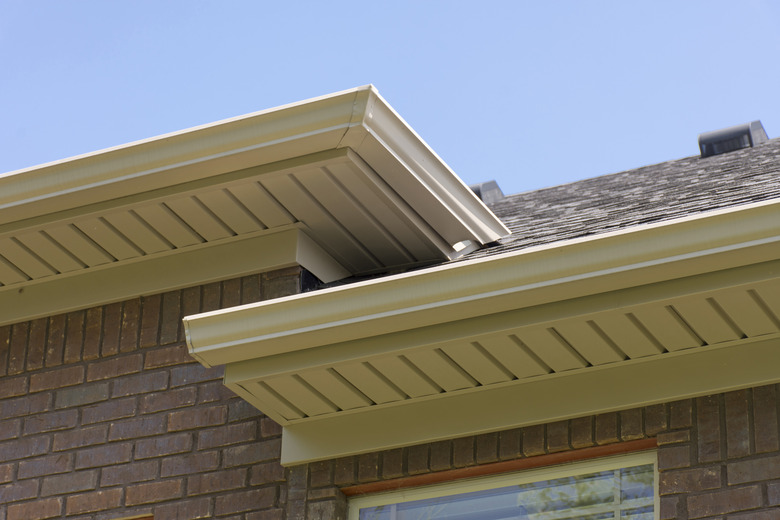How To Calculate Soffit Requirements For A Home
We may receive a commission on purchases made from links.
Any roof that slopes of necessity hangs over the side walls of the structure. The purpose of this overhang, which is formed by the roof rafters and called the eave, is to protect the walls from rain. The underside of the overhang can be left open, which is common with barns and sheds, but on most homes, it's covered by paneling that is known as soffit.
The soffit extends from the wall to the outer edge of the eave, which is usually covered by a decorative fascia board. You can make your own soffits out of plywood or wood planks, but it's more common to purchase ready-made soffit material. No matter what you use, you have to know how much to purchase, and that takes a little calculation.
How to Measure Soffits
How to Measure Soffits
In most cases, calculating the amount of soffit material you need is straightforward. You measure the distance from the wall to the fascia and then measure the total length of the fascia. Multiply these numbers to get the total square footage of soffit material you need. If you have a complicated roof, you may have to make several individual length measurements and add them together.
If you're buying premade soffit material, you'll get it in boards of precut widths, and most manufacturers provide a calculator on their website to help you determine how many individual boards you need based on the width of the boards. You generally have a choice between 12-inch and 16-inch boards, and you would use the wider ones if you have wide eaves.
Soffits Also Provide Ventilation
Soffits Also Provide Ventilation
Most homes with soffits have attics, and attics need to be ventilated. There is typically a roof or gable vent to exhaust air, but to create circulation, air has to enter from somewhere, and that's usually through the soffits. In a balanced ventilation system, cool air enters through the soffits, heats up inside the attic, and exhausts through the roof or gable vents.
Soffit vents are usually cut into the soffits after they have been installed. Some homes have individual vent openings covered by rectangular or round vent grids, and others have continuous vents, which are narrower and longer and are covered by longer grids. The number of vents you put in the soffits and their size are crucial to proper attic ventilation.
How to Calculate Soffit Vent Area
How to Calculate Soffit Vent Area
The ventilation space in the attic is determined by the floor area of the attic. The basic code requirement is that total vent space should equal 1/150 of the attic space. If a system is balanced — which means the exhaust vents in the roof comprise 40 to 50 percent of the total venting area — that ratio can be reduced to 1/300.
To calculate the soffit vent space, calculate the floor area, divide by 150 or 300, as applicable, and then divide that number by 2 since the venting should be shared equally between roof and soffit vents. Once you know the total venting area, simply read the amount of venting each of the units you plan to install provides — which is written on the packaging — and install enough of them equally spaced to provide the required area.
